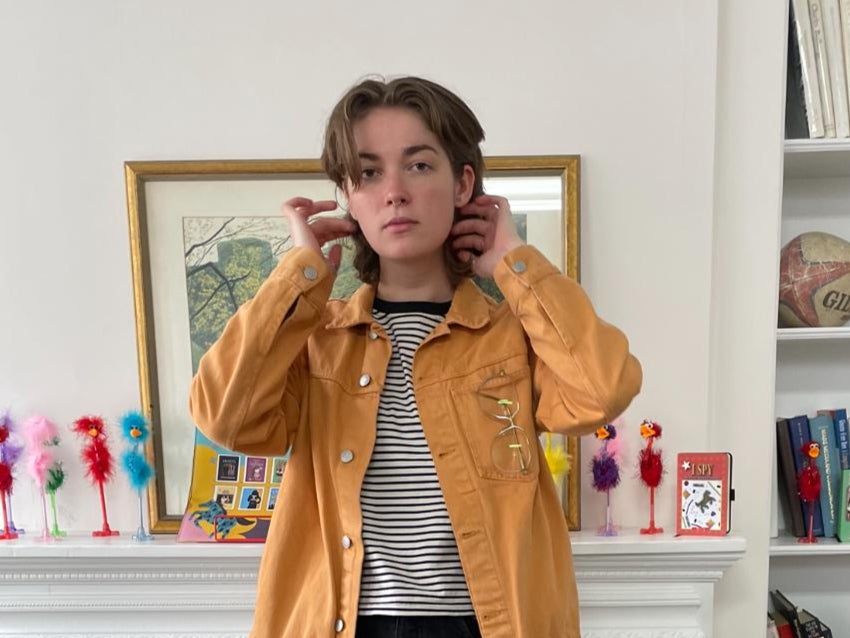Every time I put on a skirt, I’m suddenly eight years old again. I’m watching The Nutcracker, my parents having clothed me and my sisters in itchy, matching outfits. Immediately, I’m confronted by a visceral desire to wear trousers.
This feeling is not just a shift in personal style, but something more pertinent to the current political climate. So why is it that Gen Z/millennials like me (and the fashion world as a whole) has swayed towards genderless or gender-neutral clothing?
I don’t feel the need to dress in alignment with men’s expectations of women anymore. I’ve even recently thrown out all of my makeup! But why am I doing it? What does it all mean?
I could, in part, chalk this up to my newfound comfort in pursuing more queer versions of expression – that’s certainly one reason for it. But, overwhelmingly, I’ve realised this knee-jerk reaction to skirts and dresses is because they subject me to the male gaze – and I’m just not comfortable with that anymore. Unsurprisingly, it’s worked: the more I’ve strayed from feminine presentation, the less men try to talk to me.
Except on Halloween: on that night, I was dressed as Lucky Blue Smith and some guy at the bar still tried his luck – even after I pointed to myself and said, “Me?! Have you seen what I look like?” Some men, it seems, simply don’t take a hint.
It’s felt strangely bold – transgressive, even – to dress in “boy clothes” and embrace alternative haircuts. The upside is: after a lifetime of being chatted up at parties or in bars, I don’t miss it. Since I’ve been dressing for myself – and less for the beauty ideals put on women – I’ve grown used to a lack of male attention. And I like it.

It helps that dressing androgynously and embracing a non-binary aesthetic has not only become more accessible, it’s more socially appreciated – even trendy. What originally skated on the edge of the mainstream in the 2010s has now become a widespread form of gender expression. And to me, as a writer who attended fashion weeks at New York, Milan and Paris this year, it is clear this is the direction fashion is headed, too.
The Berliner noted in a recent Market Research Intellect report there’s to be a projected increase of 10.82 per cent in the unisex fashion market by 2031. People are after a more genderless or unisex appearance via what they wear. It’s not just a phase – it’s a movement.
Many big brands are leading the way into more unisex, genderless fashion lines and styling choices. I experienced this first-hand while attending the Le Damier de Louis Vuitton Fine Jewelry event at Paris Fashion Week. I chatted briefly with one of the brand representatives and learned that the maison has intentionally gone a unisex route with their latest collection. They’ve catered to more gender-inclusive shapes and designs, in line with fashion’s shifting trajectory.
Why, though? Social media trends must play a role – as we see more and more people from a range of gender identities dressing in clothing regardless of who it’s been marketed to. The fast-paced world of Instagram and TikTok creates a consistent reimagination of the ways that certain clothing items are meant to be worn (for example: the influx of people integrating dresses and skirts over trousers or shorts). I witnessed this at NYFW when I attended the Sam Finger show and saw a variety of styling choices and unexpected ways of showcasing the garments via presentation format, as opposed to a runway event.
It’s worth considering all of this in relation to the hemline index – which is a theory that suggests skirt length rises and falls with stock values (though there is not a lot of proof of this theory actually bearing much weight on modern society). Could it be that we’re in a clothing gender “crisis” because of the cost of living?
I’d argue no – because while there is no doubt that we’re in a time of austerity, this doesn’t accurately account for the way that clothing has become more androgynous over time.
What is really going on for my generation is a widespread social shift away from the notion that women’s appearance exists exclusively in tandem with male attention, as per the 4B movement, or protests against the “your body, my choice” brigade in light of the recent US election.
Fashion is just one of the ways young women like me are actively decentering men from our lives. This is why I’ve taken a personal step away from more classically-feminine clothing – and would urge you to try it, too. I just don’t feel at home in these garments anymore – or comfortable with what they represent.







